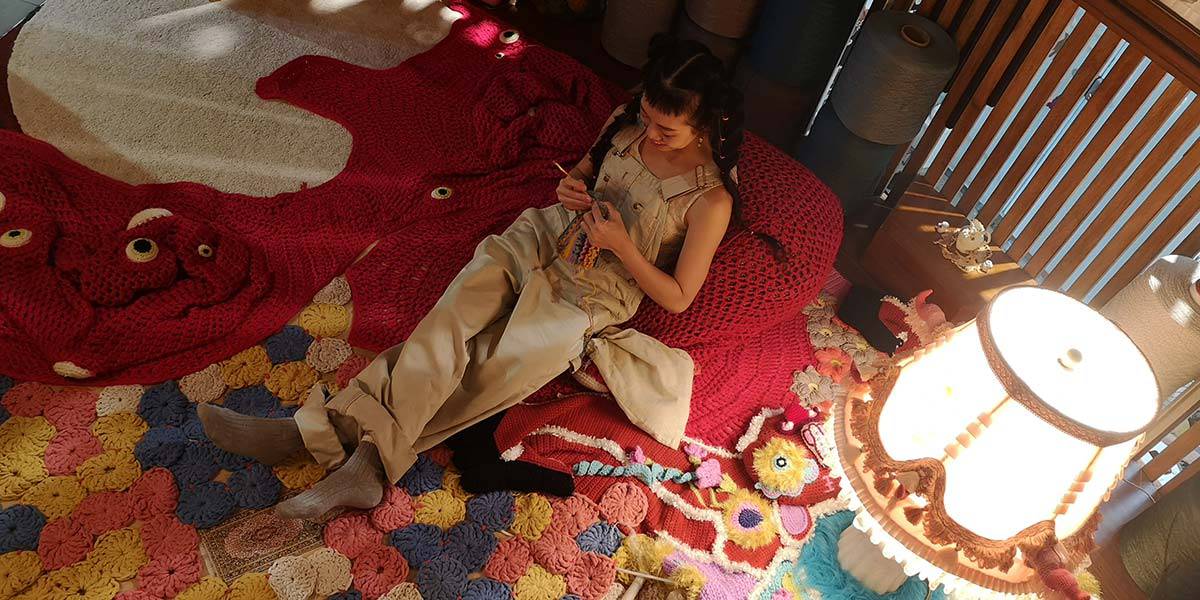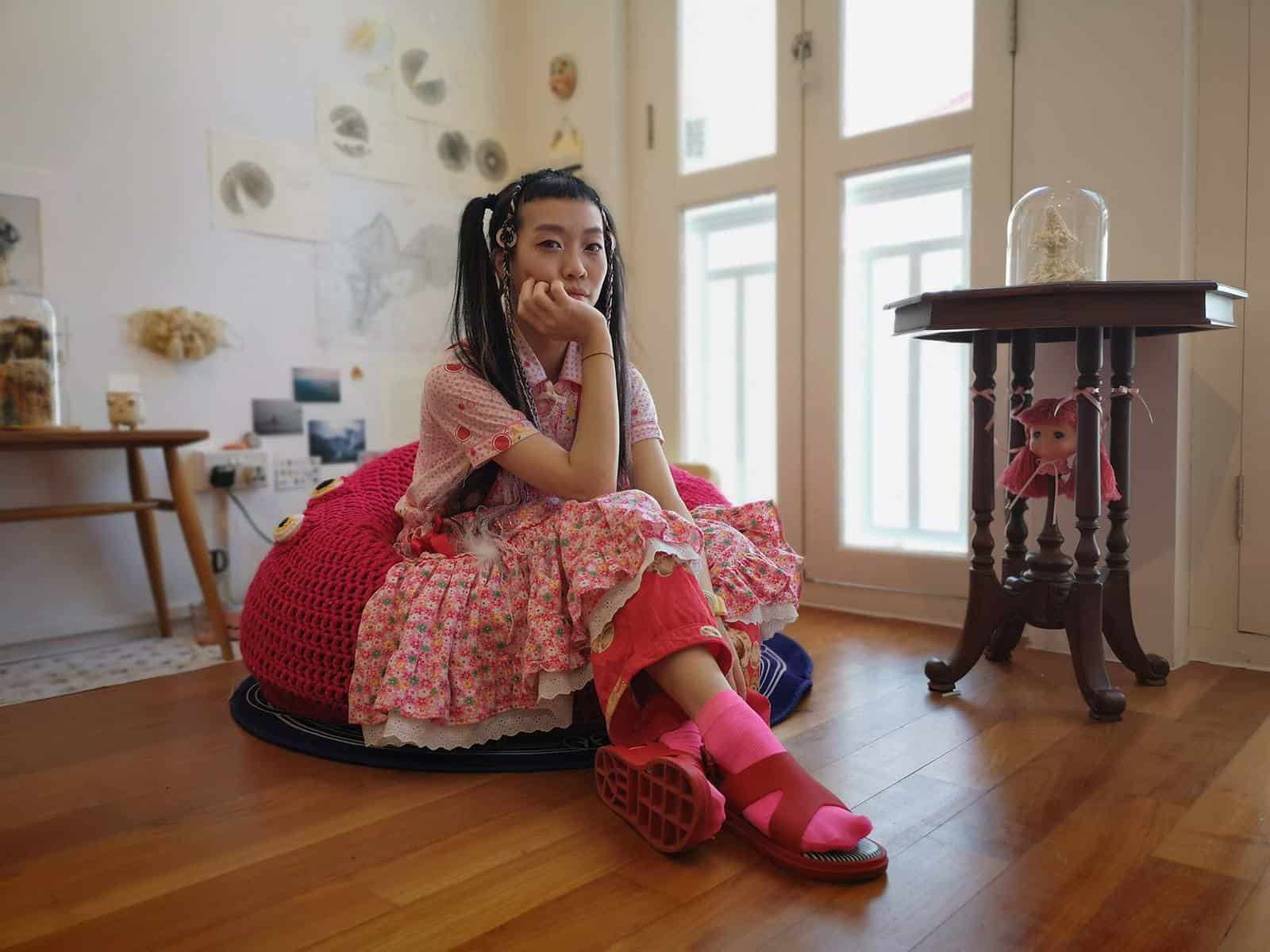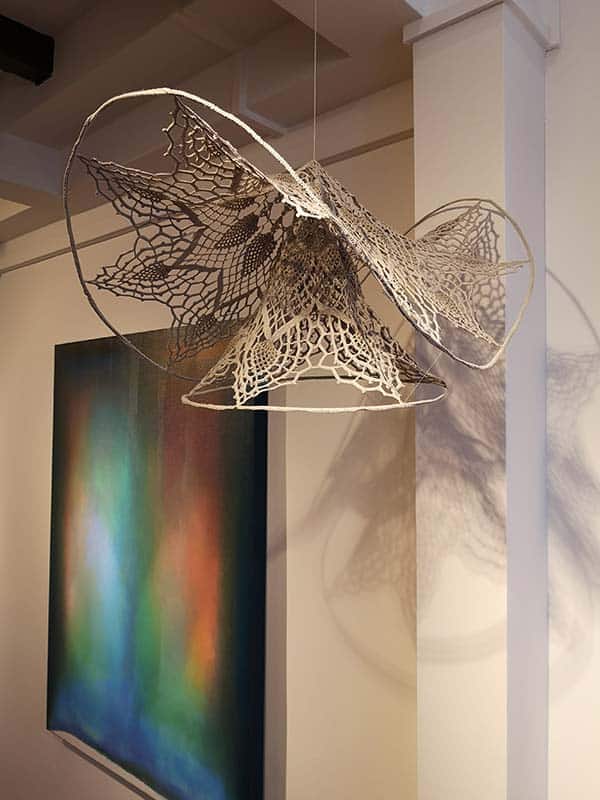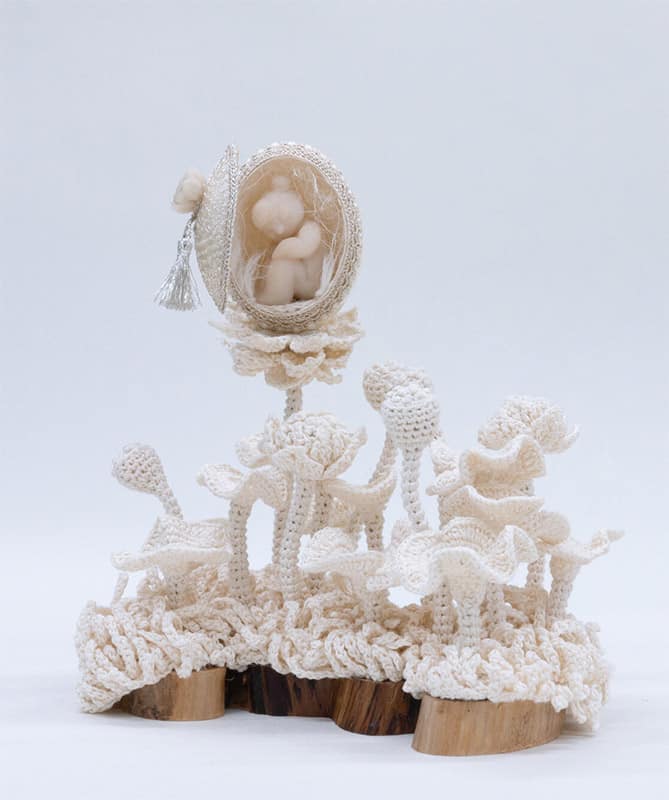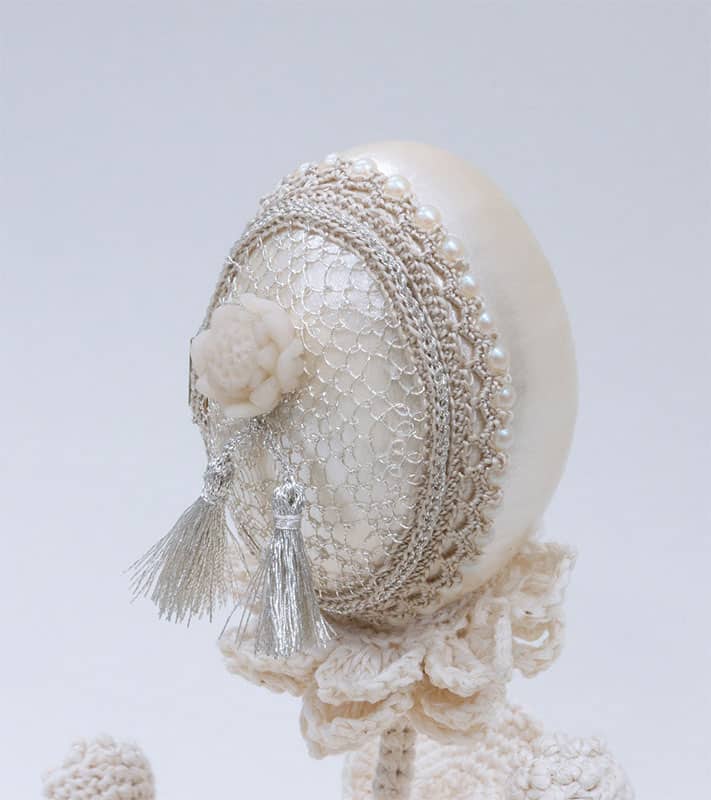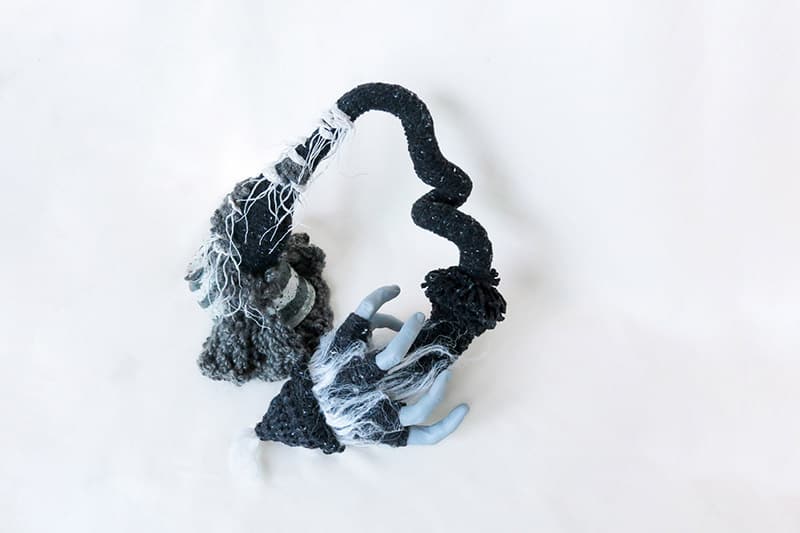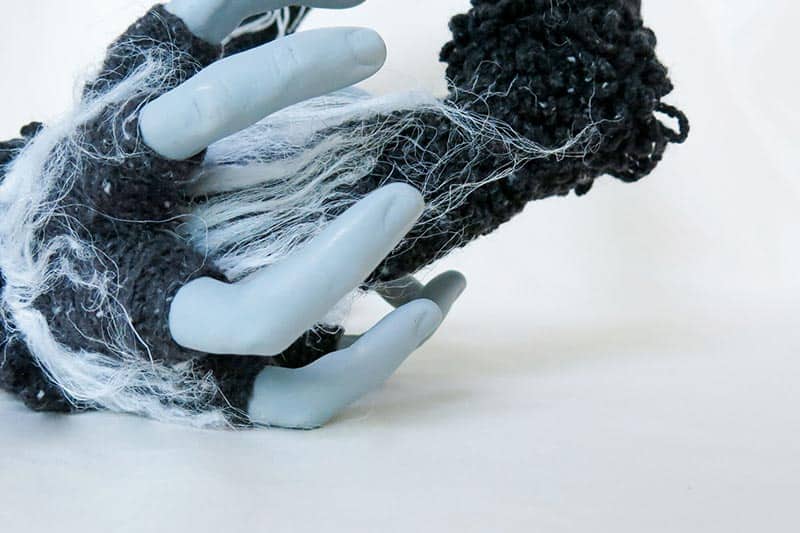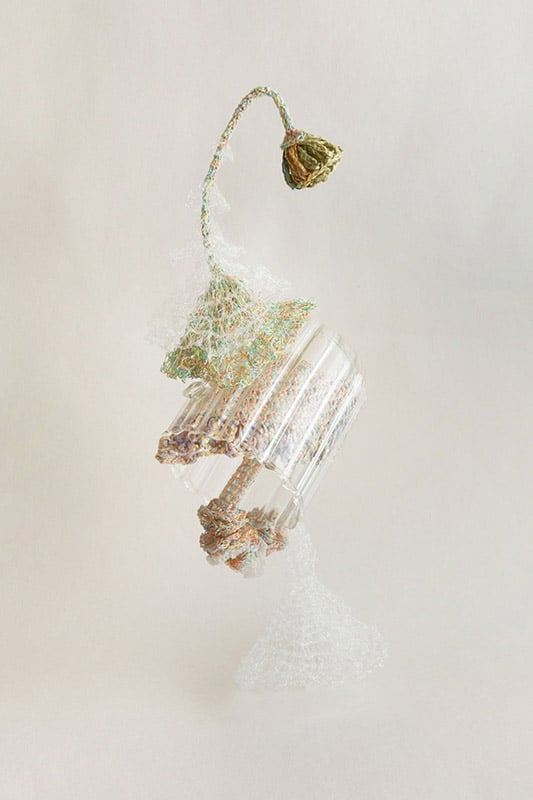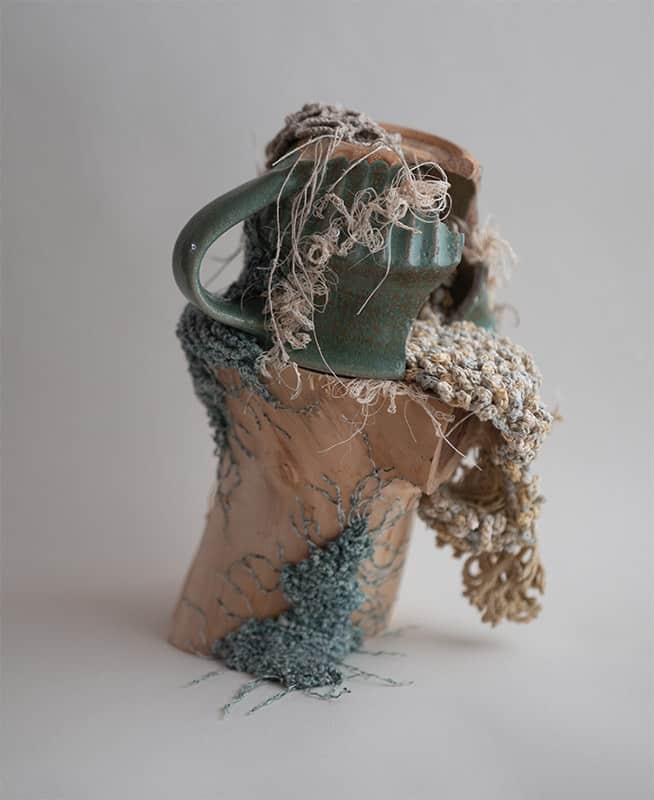What if you were forced to do something enjoyable again and again? What would you still enjoy about it?
Perhaps this is a bit of a disturbing question, but it’s one that artist Kelly Limerick has been pondering lately as she plans for a site-specific installation at Cuturi Gallery as its latest represented artist and resident. This work-in-progress has her exploring the repetitive creation of formalistically perfect shapes – and then paradoxically destroying them in flames.
“Crochet is very enjoyable, especially doilies. But what if you were forced to do something enjoyable again and again? What would you still enjoy about it?” asks Kelly. “I want to know how it feels when I burn them – how it feels to spoil that very thing that you put so much effort into making perfect.”
The paradox of burning that which you created is accentuated by the fact that crochet is incredibly slow work – a single moment of destruction effectively undermines hours or even days of intricate labour.
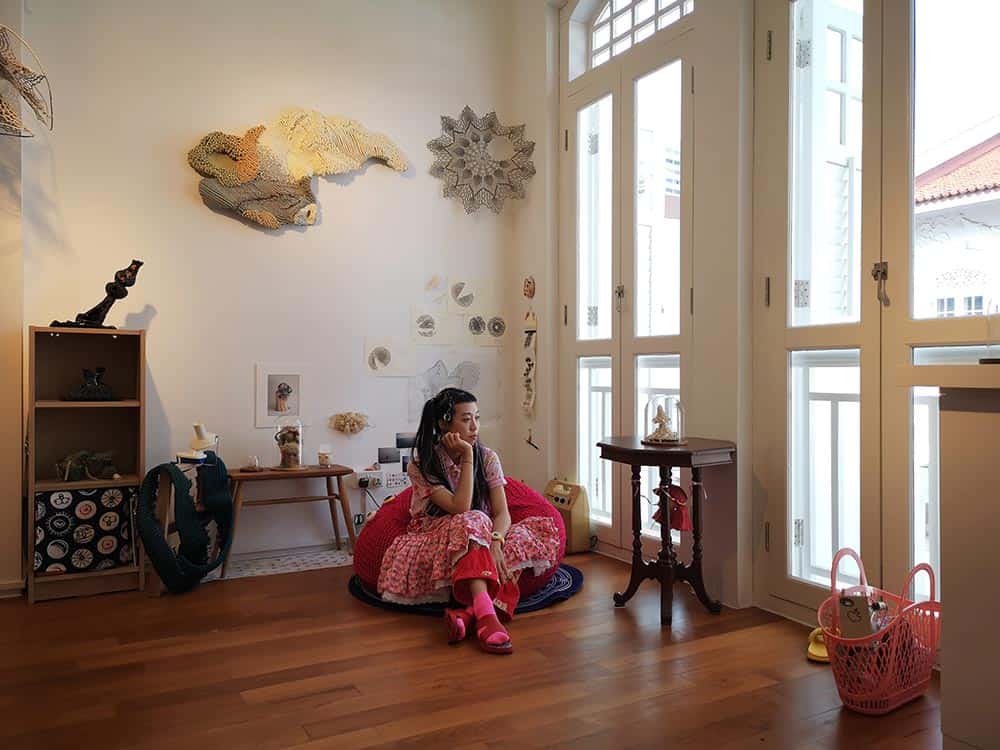
A gesture of rebellion
The artist first began to explore this paradox in her series, Time is A Commodity (2021) as a gesture of rebellion against what she perceived to be the general public’s habits of valuing crocheted works solely according to the amount of time that it takes to make it. It all started when she realised that many people could only relate to her work by asking how long she spent to make it, as though its other characteristics – aesthetics, craftsmanship, concept – were secondary, or even unimportant concerns.
With this work, she asks, “Does the value of an object lie in the time that is spent on it? Or is value more than just a representation of time?”
As the melting of these works transmutes these reproducible craft objects into unique objects of art, it also invites people to consider the disparities in the ways that craft and art are perceived and valued.
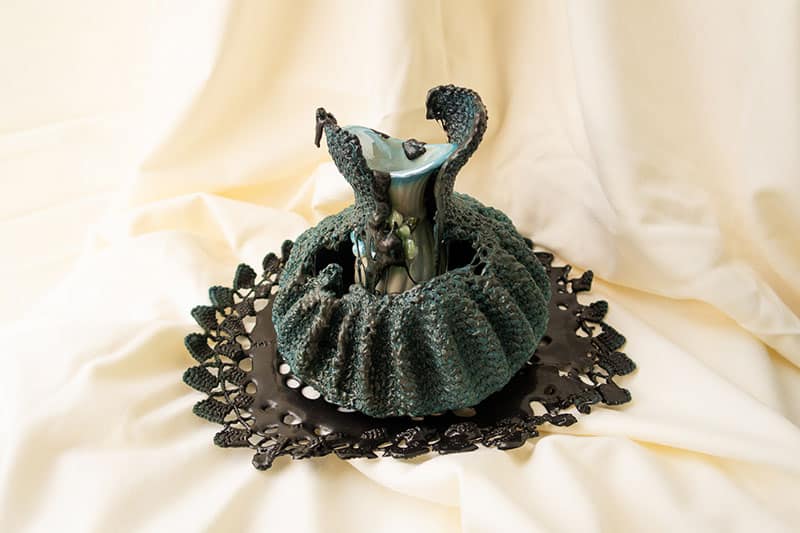
“The spark to creating this work was actually very simple: I was just very pissed off,” says Kelly. “I couldn’t understand why nobody wanted my work even though I had been working so hard, over so many years, to create them. So in a fit of anger, I thought, since it’s worthless, I might as well burn all of it down. That was the kind of mood that I was in.”
A veteran of commissioned works
Kelly’s frustrations with the underappreciation of craft’s value is a refrain that echoes despite her various successes as an artist. A veteran of commissioned work from big brands such as Nike and Facebook as well as entities like the National Heritage Board and OH! Open House, it’s clear that there is some value accorded to her work – even if it is not by commercial consensus.
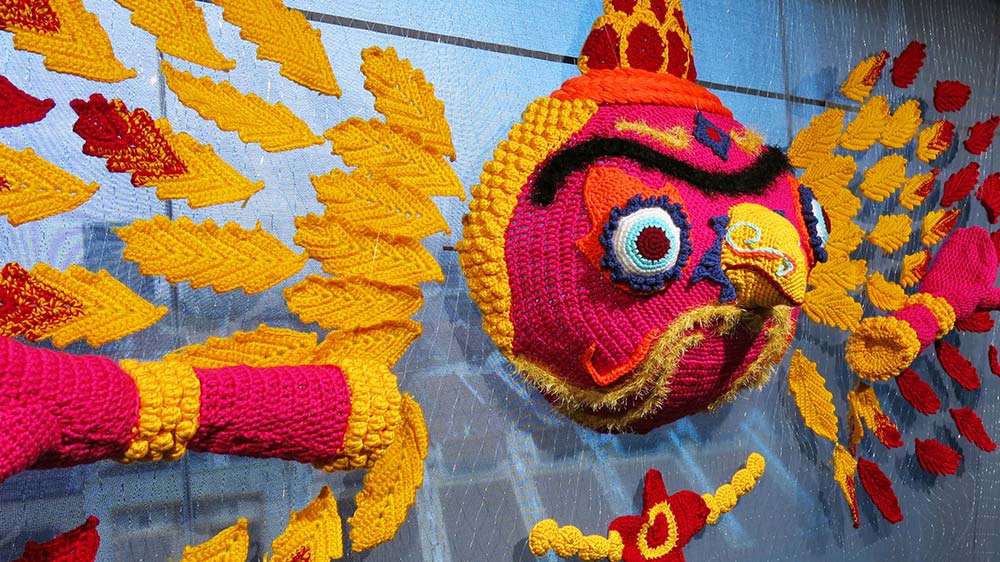
Throughout the past few years, the artist has been working hard to establish a name for herself while simultaneously pushing the limits of her craft. The commissioned works have given her a confidence in working on large-scale public artworks in collaboration with a small army of volunteers, such as her recent work for A Softer World produced by Art Encounters:
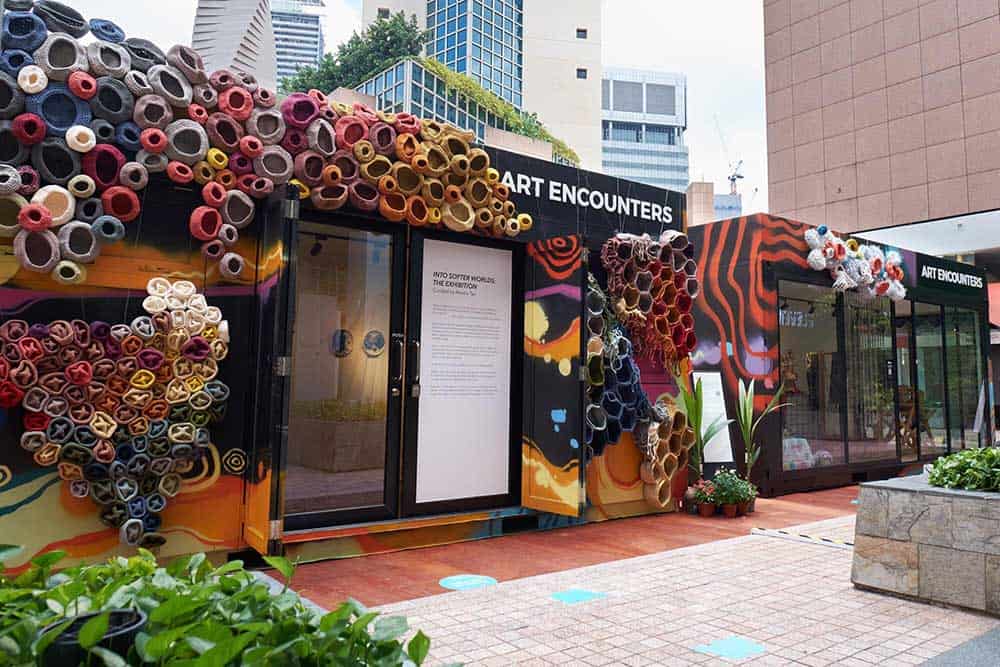
On the other hand, her sculptural works on a more intimate scale are where she challenges herself to scale new heights in technical proficiency:
A seismic shift
As the artist grows in both breadth and depth of her relationship toward her craft and how she expresses herself to the public through it, big shifts in her practice begin to show themselves. One such change is her increasing openness in experimenting with process-driven art, as embodied by Brother (2021), a work whose execution and concept is quite the landmark in Kelly’s recent oeuvre:
With this work, Kelly channels destruction through her unravelling of the painted yarn, to speak to the way that migrant workers’ identities are erased and rendered illegible despite how their labour is woven into the very fabric of our society. It’s a work that possesses conceptual strength and aesthetic beauty. While the craftsmanship is not technically as ambitious as her other works, Brother taps on essential characteristics of her chosen craft to ruminate on labour, value, time and perhaps, futility.
In it, I glimpse a seismic shift in Kelly’s practice. The artist may have cut her teeth – and gained her fame – on the intricate fantastical, but now that she has mastered it, she is more than ready to conquer new ground.
“It can sound like shit, but what are you trying to tell people through it?”
She credits these developments to a perspective that a friend had opened her eyes to, during a lesson on making music through creative coding.
“I told my friend Chris, who was teaching the class, that I’m completely not musical and I was afraid that what I created was going to sound terrible. He said, if that’s the case, so be it – in this day and age, all the most beautiful music has already been composed. For a class that lasts two months, there was no way that I could be any better than the classically trained professionals out there.”
“He said, ‘Actually when you make this soundscape, it’s not about creating beautiful music. It can sound like shit, but what are you trying to tell people through it? Do you have something that you really want to express?’”
Away from the beaten path, into a derelict wilderness
Other developments in her practice are subtler, but nonetheless as important. During the Circuit Breaker last year, Kelly began to delve into incorporating different materials and yarn fibres into her works. This, along with the artist’s penchant for narrative-building, resulted in the birth of her 魂 (tamashii or spirit) series.
In this series, she sought to capture the abstract essence of broken found objects by imagining the beings that inhabited them. It’s a concept that takes inspiration from the Shinto belief that supernatural entities reside in non-living objects – which escape when the object is broken.
Creating these pieces that were inspired by the wild and derelict qualities of nature required Kelly to abandon fundamental beliefs that she had long held about crochet. “Prior to this, I’d never explored mixed media before,” she says. “I was quite the crochet purist; I wanted everything in my work to be made out of crochet.”
For years, the artist had clung to her iron-clad belief that an unbroken surface of pure crochet yarn was a standard of excellence for a crochet artist such as herself.
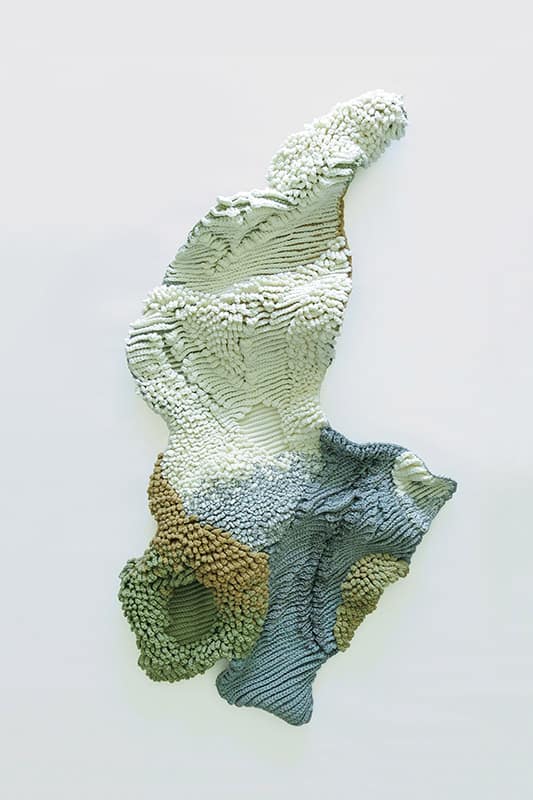
Riding a dragon
“But then I told myself, okay, if you really want to mimic nature, the work has to have this kind of recklessness in it. You cannot always control it because then it will never be the way that nature is. It was very difficult for me because I’d been doing things a certain way for over a decade, but I forced myself to try it.”
In doing so, the artist thinks about the way that American author Ursula Le Guin regards her writing process as akin to riding a dragon:
“There have to be long conversations with the dragon I ride. But however watchful and aware I am, I know I can never be fully aware of the currents that carry the boat, of where the winds beneath the dragon’s wings are blowing.”
Ursula K. Le Guin
In a similar way, Kelly’s slowly loosening her grasp on her medium, and learning to listen to what the work has to say for itself. In this push and pull between the artist and her craft, things both beautiful and broken emerge. The magic is where the two coexist, and the artist begins to trust her sense of what is right.
I imagine that this is the big work that lays ahead of Kelly as she begins her residency at Cuturi Gallery – and I’ll make no secret of the fact that I, for one, cannot wait for her solo exhibition next April.
_____________________________
Find out more about Kelly Limerick’s work here: http://www.kllylmrck.com
For more information about Cuturi Gallery, click here: https://www.cuturigallery.com
